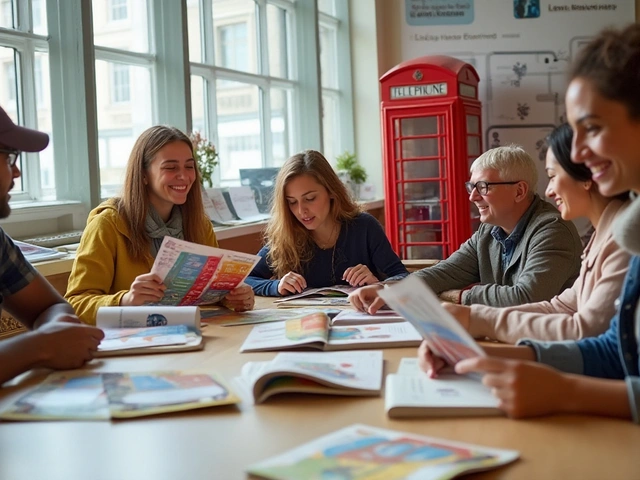Immunosuppressant Decision Guide
Personalized Recommendation Tool
Select your medical factors to receive evidence-based recommendations for immunosuppressant options.
If you or a loved one need an immunosuppressant, the first name that pops up is often Cyclosporine. But the market is crowded with drugs that promise similar or even better outcomes with fewer side‑effects. This guide walks you through the most common alternatives, breaks down how they differ, and helps you decide which one fits your medical situation.
What Is Cyclosporine?
Cyclosporine is a calcineurin inhibitor that suppresses the immune system by blocking T‑cell activation. First approved in the early 1980s, it quickly became a staple for organ‑transplant patients and for several autoimmune conditions such as psoriasis and rheumatoid arthritis. The drug comes in oral capsules, an oral solution, and an injectable form, allowing clinicians to tailor dosing to the patient’s needs.
Despite its long track record, cyclosporine is notorious for kidney toxicity, high blood pressure, and gum overgrowth. Monitoring blood levels is essential, and many patients look for alternatives that hit the same therapeutic targets without the same side‑effect baggage.
Key Alternatives Overview
Below is a snapshot of the most widely prescribed alternatives. Each belongs to a different drug class, which means the way they quiet the immune system varies.
- Tacrolimus - another calcineurin inhibitor, slightly more potent but often better tolerated in the kidney.
- Mycophenolate mofetil - an antimetabolite that blocks lymphocyte proliferation.
- Azathioprine - a purine analogue that interferes with DNA synthesis in rapidly dividing cells.
- Sirolimus (rapamycin) - an mTOR inhibitor that prevents cell cycle progression.
- Corticosteroids (e.g., prednisone) - broad anti‑inflammatory agents used short‑term or as adjuncts.
All of these drugs are used in transplantation, systemic autoimmune diseases, and some dermatologic conditions. Their efficacy, safety profile, and cost can differ dramatically.
How They Compare: Mechanism, Efficacy, Safety
Understanding the pharmacologic nuances helps you ask the right questions at the doctor’s office. The table below outlines the core attributes that matter most when you’re weighing options.
| Drug | Mechanism of Action | Primary Indications | Common Side Effects | Typical Cost (US$ per month) |
|---|---|---|---|---|
| Cyclosporine | Calcineurin inhibition → ↓ IL‑2 production | Kidney, liver, heart transplant; severe psoriasis | Nephrotoxicity, hypertension, gum hypertrophy | ≈ 150-250 |
| Tacrolimus | Calcineurin inhibition (more potent) → ↓ IL‑2 | Kidney transplant; atopic dermatitis | Neurotoxicity, diabetes, less renal impact | ≈ 180-300 |
| Mycophenolate mofetil | Inhibits inosine monophosphate dehydrogenase → ↓ guanosine synthesis | Kidney & heart transplant; lupus nephritis | Gastrointestinal upset, leukopenia | ≈ 100-200 |
| Azathioprine | Purine analogue → impaired DNA synthesis | Inflammatory bowel disease, rheumatoid arthritis | Bone‑marrow suppression, hepatotoxicity | ≈ 30-80 |
| Sirolimus | mTOR inhibition → ↓ cell proliferation | Kidney transplant; certain cancers | Hyperlipidemia, delayed wound healing | ≈ 250-400 |
Notice three patterns:
- Calcineurin inhibitors (cyclosporine, tacrolimus) share a core pathway but differ in potency and side‑effect spectrum.
- Antimetabolites (mycophenolate, azathioprine) tend to be cheaper but can cause bone‑marrow suppression.
- mTOR inhibitors (sirolimus) are powerful for certain cancers but bring metabolic challenges.
From a safety standpoint, tacrolimus often wins the kidney‑friendliness contest, while mycophenolate scores high on tolerability for gastrointestinal symptoms.
Cost and Accessibility
Price can be a deal‑breaker, especially when therapy stretches for years. Generic cyclosporine is widely available in the UK and US, but insurance formularies sometimes push patients toward mycophenolate because of lower co‑pays. Tacrolimus generics entered the market only recently (2023), and their price is still catching up.
For patients in the United Kingdom, the NHS typically covers cyclosporine, tacrolimus, and mycophenolate for transplant indications, but the choice often hinges on the specialist’s protocol rather than cost. In the United States, out‑of‑pocket expenses can vary from $30 for generic azathioprine to over $300 for branded sirolimus.
Choosing the Right Drug: Decision Guide
Here’s a quick decision‑tree you can discuss with your doctor:
- If you need a very strong immunosuppressive effect for a high‑risk organ transplant, start with a calcineurin inhibitor-either cyclosporine or tacrolimus.
- If your kidneys are already compromised, tacrolimus may be gentler.
- If you want a non‑calcineurin option to avoid nephrotoxicity, consider mycophenolate mofetil or azathioprine.
- For patients with a history of diabetes or neurotoxic side‑effects, avoid tacrolimus and weigh mycophenolate.
- If you’re dealing with a malignancy that requires an mTOR block, sirolimus becomes the logical choice.
In every case, therapeutic drug monitoring (TDM) is essential for calcineurin inhibitors. Blood trough levels for cyclosporine typically sit between 100-200 ng/mL, whereas tacrolimus targets 5-15 ng/mL.
Common Pitfalls and Monitoring Tips
Even the best drug can go wrong if you skip routine labs.
- Kidney function: Check serum creatinine every 1-2 weeks for the first three months on cyclosporine or tacrolimus.
- Blood pressure: Both calcineurin inhibitors can raise BP; keep a home log.
- Blood counts: Mycophenolate and azathioprine require CBC checks weekly initially.
- Lipid profile: Sirolimus can spike cholesterol-measure every month.
- Drug interactions: Avoid grapefruit juice with cyclosporine, as it raises drug levels dramatically.
Communicate any new medications, over‑the‑counter supplements, or herbal products to your prescriber. A small change can swing drug levels out of the therapeutic window.
Bottom Line
Cyclosporine remains a workhorse in immunosuppression, but today’s arsenal offers several viable alternatives that may be safer, cheaper, or better suited to specific comorbidities. The right choice hinges on three pillars: the disease you’re treating, your organ‑function baseline, and your personal tolerance for side effects. Armed with this comparison, you can have a data‑driven conversation with your healthcare team and land on the regimen that fits your life.
What is the main difference between cyclosporine and tacrolimus?
Both are calcineurin inhibitors, but tacrolimus is about three times more potent and generally causes less kidney toxicity. It does, however, have a higher risk of diabetes and neurotoxic symptoms.
Can I switch from cyclosporine to mycophenolate without a washout period?
Switching is possible but should be done under strict medical supervision. Overlap for a few days may be required to avoid rejection in transplant patients, and blood levels must be monitored closely.
Is cyclosporine covered by the NHS?
Yes, the NHS generally funds cyclosporine for approved transplant and severe autoimmune indications, but the exact formulary can vary by region and specialist recommendation.
What monitoring is required for patients on sirolimus?
Regular lipid panels, liver function tests, and complete blood counts are essential. Sirolimus also needs trough level checks, usually aiming for 5-15 ng/mL.
Are there any food restrictions when taking cyclosporine?
Avoid grapefruit juice, which can increase cyclosporine blood concentrations and raise the risk of toxicity. Otherwise, a balanced diet is fine.






Monika Bozkurt
October 19, 2025 AT 20:56